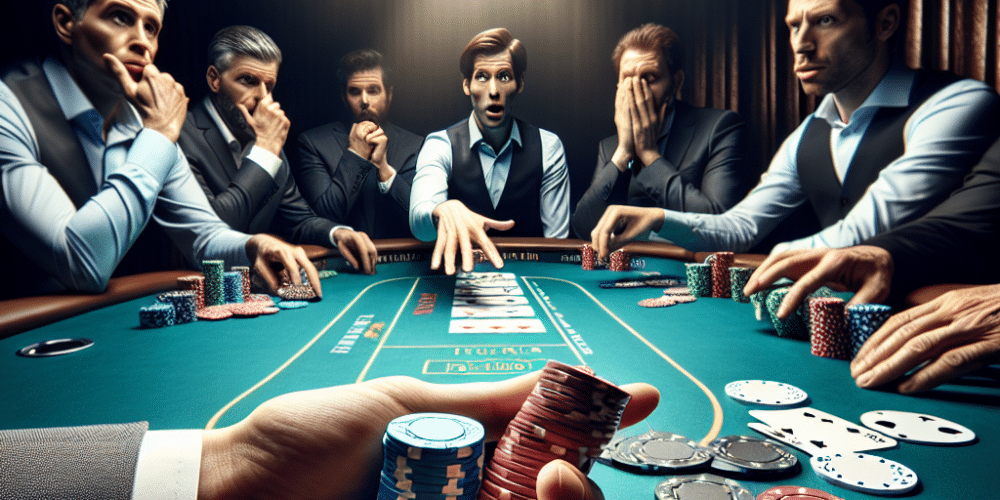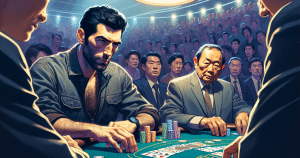In the heart of Las Vegas, at the iconic World Series of Poker Main Event final table, Adam Hendrix took a bold step by four-betting over Luka Bojovic, leaving the crowd buzzing. With seven players remaining, the stakes were as high as the tension in the room, where one decision could cost millions or make a champion. Hendrix’s daring play exemplified the aggressive strategies that have become more prevalent in modern poker, especially at this level of competition.
The tournament, which began with thousands of hopeful entrants, had been whittled down to the most skilled and fortunate few. As the players vied for the coveted WSOP bracelet and a multi-million dollar prize, the atmosphere was electric. In this high-pressure environment, every hand is crucial, and Hendrix’s aggressive move was a testament to his strategic acumen.
Poker, especially at the highest levels, has evolved significantly over the years. The introduction of solvers and game theory optimal (GTO) strategies has transformed how the game is played. Players are now more calculated, understanding the math behind each decision. Hendrix’s choice to four-bet was not just a gamble but a calculated risk based on the dynamics at the table and his understanding of Bojovic’s playing style.
At the time of the hand, the blinds were significant, and every chip movement was pivotal. Hendrix, known for his analytical prowess, recognized an opportunity to pressure Bojovic, who had been playing aggressively. In the poker world, aggression can often be countered with more aggression, provided it’s done with precision. “The moment called for it,” the room seemed to echo, as players and spectators alike tried to anticipate what would unfold next.
This move was a classic example of how high-stakes poker isn’t just about the cards but about reading opponents and understanding their tendencies. Bojovic, faced with Hendrix’s unexpected aggression, was put in a tight spot. The pressure of the final table magnified every decision, and the psychological battle between the two players was palpable.
However, not everyone agrees with such aggressive tactics. Some poker purists believe that relying heavily on mathematical models takes away from the traditional skill and instinct that the game is known for. They argue that the beauty of poker lies in its unpredictability and the human element, which can sometimes be overshadowed by overly analytical play.
On the other hand, proponents of the GTO approach argue that poker is a game of adaptation. The best players are those who can adjust their strategies to the evolving meta-game. Hendrix’s four-bet could be seen as a reflection of this adaptability—an ability to exploit the situation using modern tools and techniques.
As the hand played out, the tension in the room was almost tangible. Spectators watched with bated breath as the dealer prepared to lay out the next card. Would Bojovic fold under the pressure, or would he rise to the occasion with a counter-move of his own?
Bojovic’s hesitation was telling. He knew that Hendrix was a formidable opponent who wouldn’t make such a move lightly. There was a long pause as Bojovic weighed his options, considering both his hand and his read on Hendrix. The decision was not just about the current hand but also about setting the tone for the remainder of the tournament.
The psychological warfare between Bojovic and Hendrix was a microcosm of the broader dynamics at play in modern poker. Players are constantly trying to outthink each other, using every available piece of information to gain an edge. While some viewers might see a simple card game, those in the know understand the layers of strategy involved.
Ultimately, Bojovic decided to fold, much to the surprise of some and the relief of others. Hendrix’s bold play had paid off, allowing him to scoop a sizable pot without having to go to showdown. This was a significant boost to his chip stack and a psychological victory that could influence future hands.
In the aftermath, discussions erupted about the wisdom of Hendrix’s decision. Was it a stroke of genius or an unnecessary risk? The debate underscored the complexity of poker strategy and the different philosophies that players bring to the game.
In the days following the tournament, poker forums and social media were abuzz with analyses of the hand. Some praised Hendrix for his courage and foresight, while others critiqued his approach, suggesting that a more conservative strategy might have been safer at such a critical juncture.
Despite differing opinions, one thing was clear: Hendrix had left an indelible mark on the WSOP Main Event. His four-bet against Bojovic was a highlight of the tournament, a moment that would be dissected and debated by poker enthusiasts for years to come.
The WSOP Main Event final table is not just a test of skill but a showcase of the evolution of poker. In an era where players are constantly pushing the boundaries of what’s possible, Hendrix’s move served as a reminder that poker is as much about the mind as it is about the cards. As the game continues to evolve, so too will the strategies and stories that emerge from the felt.

















